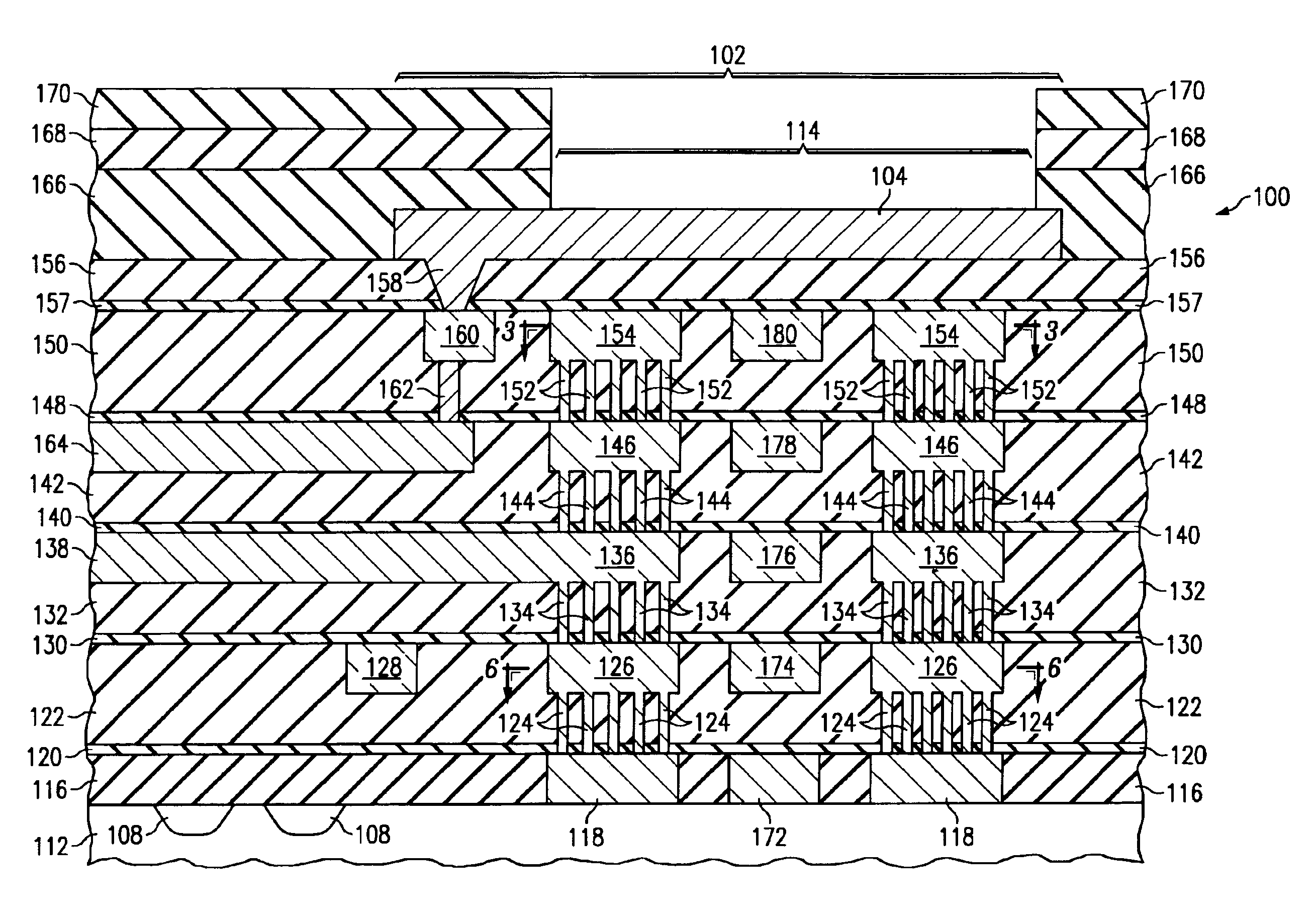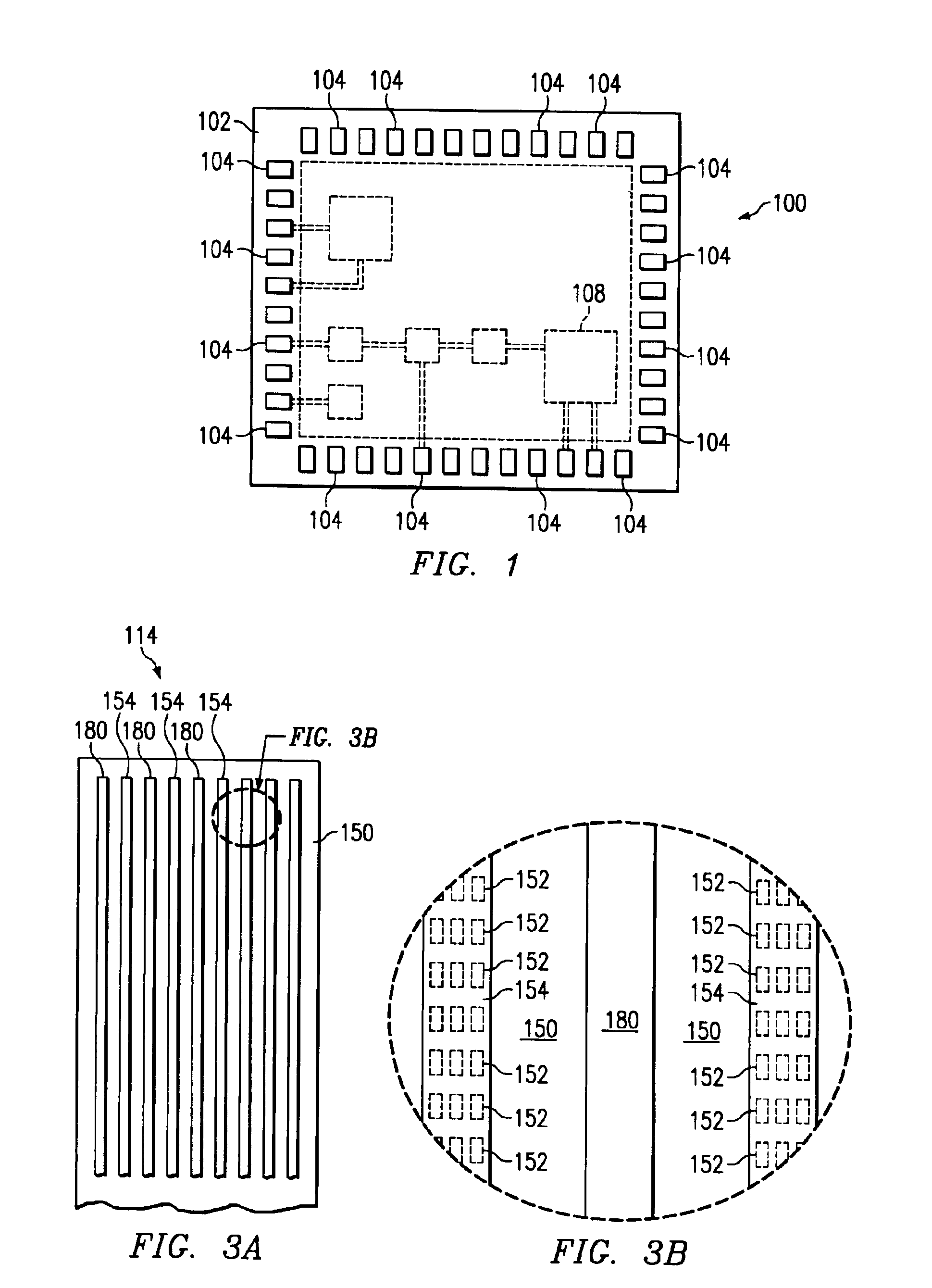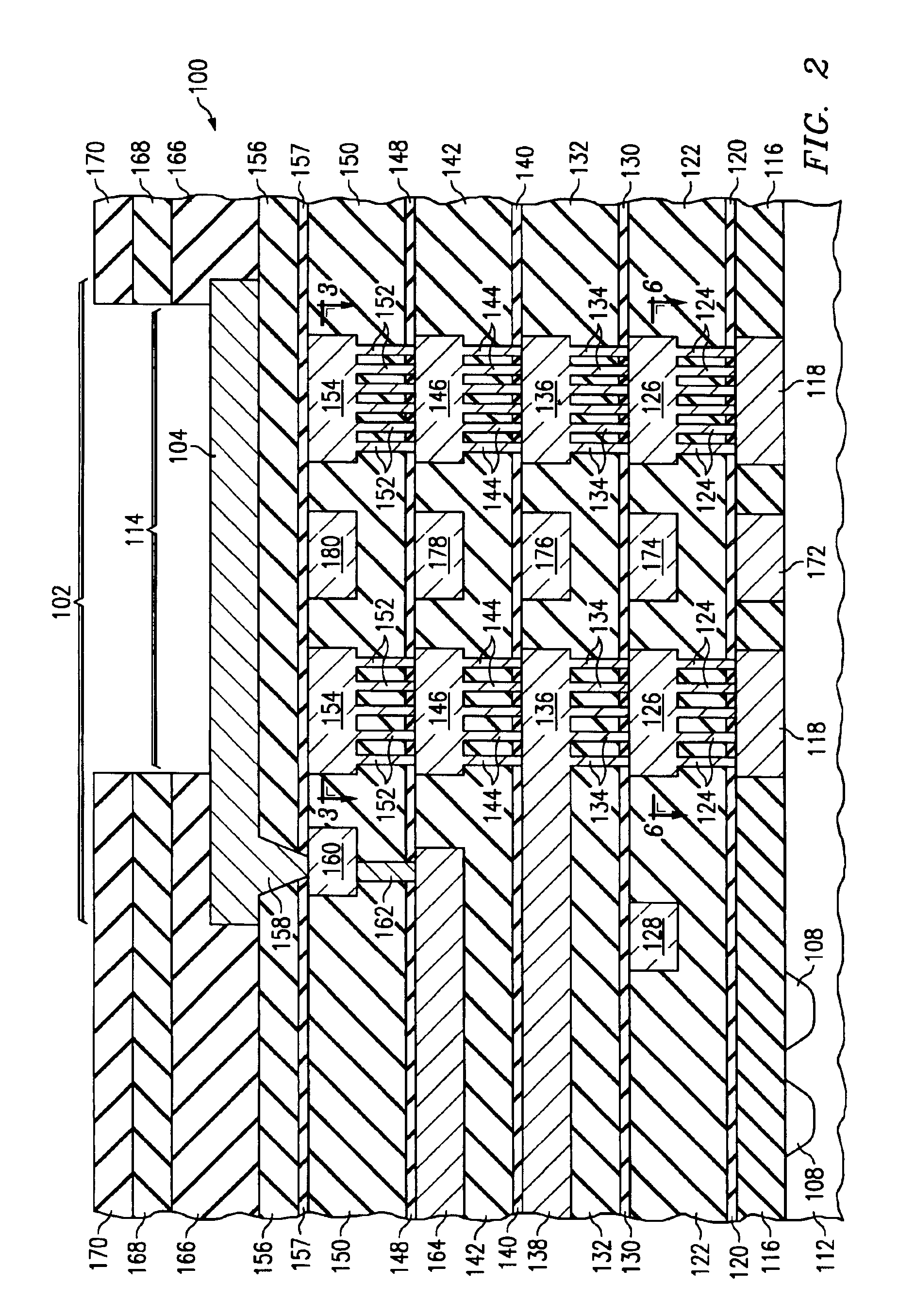Support structures for wirebond regions of contact pads over low modulus materials
a technology of low-modulus materials and support structures, which is applied in the direction of semiconductor devices, semiconductor/solid-state device details, electrical apparatus, etc., can solve the problems of less structural stability of metallization embedded in low-k dielectric materials, low modulus of low-k dielectric materials, and difficulty in wirebonding contact pads having low-k dielectric materials disposed beneath the pads, so as to reduce the chance of damage to the die and increase yield
- Summary
- Abstract
- Description
- Claims
- Application Information
AI Technical Summary
Benefits of technology
Problems solved by technology
Method used
Image
Examples
Embodiment Construction
[0021]Preferred embodiments of the present invention will be discussed, followed by a discussion of the advantages thereof.
[0022]FIG. 1 illustrates a top view of a semiconductor device 100 in accordance with embodiments of the present invention that comprises at least one contact pad region 102. The contact pad region 102 contains a plurality of contact pads 104 located at the top surface of the semiconductor device 100. The contact pad region 102 may be located at the perimeter or edge of the semiconductor device 100, as shown; however, alternatively, the contact pad region 102 may comprise other areas of the semiconductor device 100, such as the central region, as an example. The device 100 includes one or more integrated circuits 108 formed therein, in underlying layers, for example.
[0023]In accordance with embodiments of the invention, two or more layers of support structures are formed within the low modulus, low-K material layers of the semiconductor device beneath at least th...
PUM
 Login to View More
Login to View More Abstract
Description
Claims
Application Information
 Login to View More
Login to View More - R&D
- Intellectual Property
- Life Sciences
- Materials
- Tech Scout
- Unparalleled Data Quality
- Higher Quality Content
- 60% Fewer Hallucinations
Browse by: Latest US Patents, China's latest patents, Technical Efficacy Thesaurus, Application Domain, Technology Topic, Popular Technical Reports.
© 2025 PatSnap. All rights reserved.Legal|Privacy policy|Modern Slavery Act Transparency Statement|Sitemap|About US| Contact US: help@patsnap.com



